By Emily Kestel, Fearless editor
The majority of Americans believe it’s more likely that self-driving cars will be a normal mode of transportation before women make up half of the CEOs at Fortune 500 companies, according to a recent survey.
There’s good reasoning behind their thinking. As of May of this year, 44 women are at the helm of Fortune 500 companies – and that’s a record. For those calculating, that checks out to a paltry 8.8%. While that’s six times their share two decades ago, when there were seven, the road to parity is a long one.
In Iowa, the proportion of women at the highest levels of leadership has risen by 4% in the last dozen years. The latest data from the Equal Employment Opportunity Commission shows that women continue to hold fewer than a third of executive-level leadership positions in Iowa’s private sector.
The EEOC requires periodic reports from employers across the country about the gender and racial makeup of their workforces. Data from the 2019 and 2020 EEO-1 reports, which details private companies with 100 or more employees and federal contractors with 50 or more employees, was used for this article.
Women in Iowa have consistently made up 46% to 47% of the private-sector workforce in the state, according to the EEOC. Yet the rate of women in leadership positions is far below that.
Women hold about 40% of midlevel management positions in Iowa. At the executive level, that rate drops to 31%. The EEOC defines executive-level positions as people who create strategies for the entire organization, with positions including CEOs and CFOs. Midlevel managers report to those in the executive-level positions.
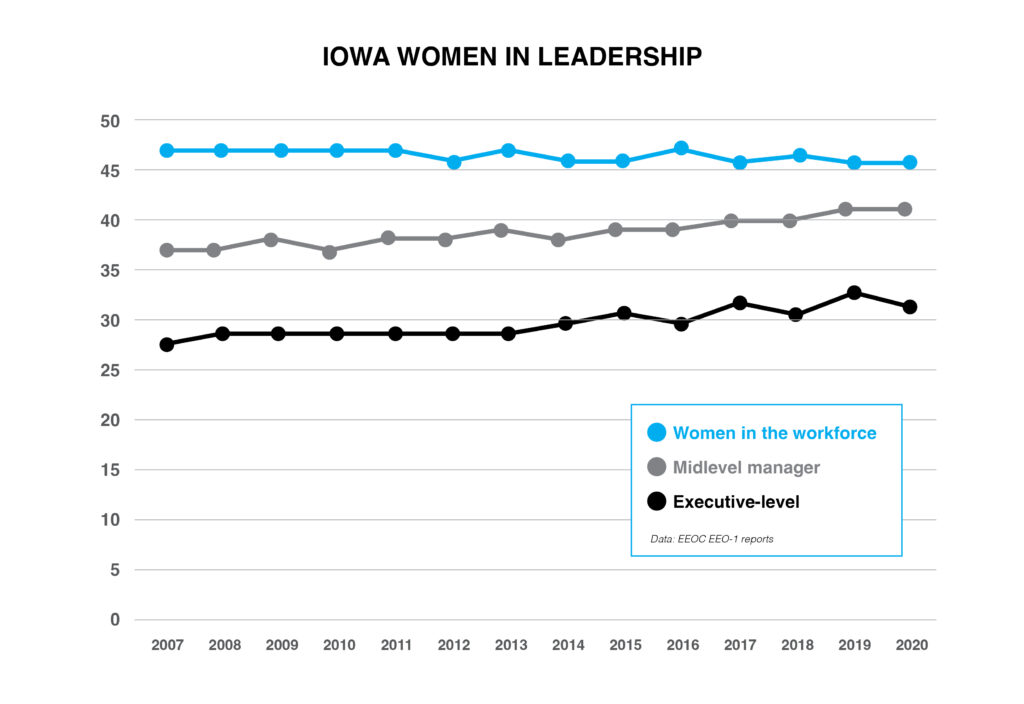
There is an even greater disparity when it comes to representation of women of color in leadership positions. In 2020, women of color made up 18% of the women in Iowa’s workforce, but only 4% of female leaders at the executive level and 7% at the midlevel manager level. In 2018, those rates were 18%, 3% and 8%, respectively.
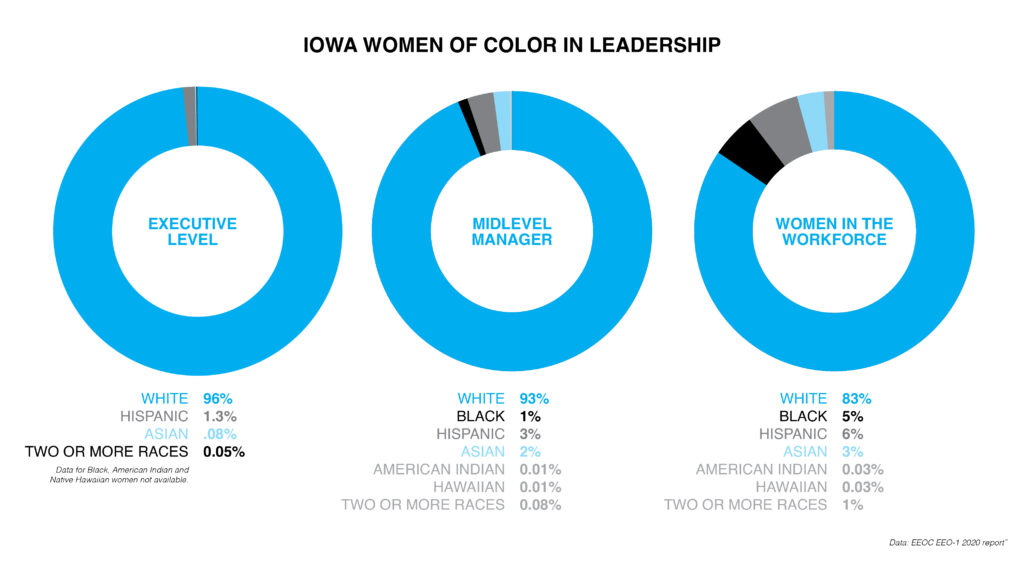
Of the 2,300 women in executive-level positions in 2020, 2,211 were white, 30 were Hispanic, 19 were Asian and 11 were two or more races. EEOC data was not made available for the number of Black, Native Alaskan or American Indian, and Native Hawaiian or Pacific Islander women in executive-level positions.
When examining members of the Iowa Business Council, which consists of the largest 20 employers in the state, women make up 33% of positions at the executive level and 34% of seats on boards of directors.
Information on the makeup of boards of directors from Weitz, Vermeer, Pella Corp., Kent Corp., Fareway and Collins Aerospace was not made available. Information on the makeup of executive leadership teams from Fareway, Kent Corp. and Vermeer was not made available. Data for the other companies was compiled using information on their websites or through email contact.
What do national numbers look like?
At the national level, 1 in 4 C-suite leaders in corporate America are women, according to a recent analysis by Lean In and McKinsey. Only 1 in 20 C-suite leaders are women of color.
Lean In uses the metaphor of a broken rung when examining the proportion of women ascending into leadership positions. The further up the corporate ladder, the fewer women there are. Women comprise 48% of employees at the entry level, 40% of manager-level positions, 36% of senior manager or director positions, 32% of vice presidents, 28% of senior vice presidents, and 26% of C-suite positions.
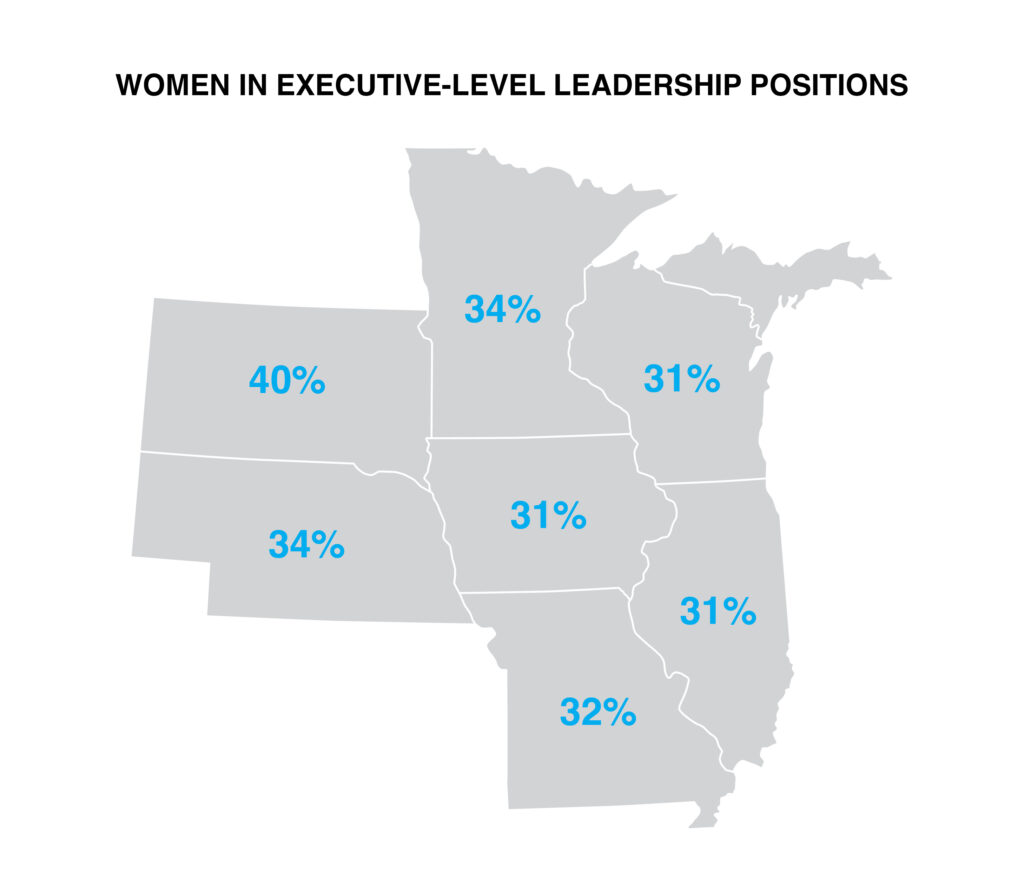
When examining Iowa’s neighboring states, Iowa is tied with Wisconsin and Illinois in terms of representation of women in executive-level leadership. South Dakota has the highest percentage of female executives at 40%, and also has the highest rate of women in the workforce – 53%. In all six bordering states, women comprise between 40% and 43% of midlevel manager positions.
What’s holding women back?

There are a variety of barriers that women face when ascending to leadership positions.
“It’s a complex problem. It’s not just one thing,” said Tara Widner, interim director of the leadership studies program and associate teaching professor at Iowa State University.
There are a plethora of metaphors to explain some of the barriers that women face when ascending into leadership positions, the most well-known of them being the glass ceiling, glass cliff and broken ladder. The textbook that Widner teaches from lists eight.
Other barriers include caregiving responsibilities, perceptions of what leadership should look like, lack of developmental opportunities and experiencing microaggressions or outright discrimination.
What are the solutions?
There is no silver bullet when it comes to ensuring equal gender representation in leadership, but it starts with acknowledging that it’s an issue.
“You start by creating a sense of urgency around the issue. I think we have a sense of urgency [right now],” Widner said. “Who’s going to work on this? Can we have a work group that examines the organization’s policies that are maybe impacting your recruitment? Can we have another group that looks at your retention? How do we figure out what the organization wants? What is that vision?”
Below are various strategies, policies and programs of closing the leadership gender gap, all of which were gathered from previous Fearless articles and columns, the 2022 Women in the Workplace report, the textbook that Widner refers to, or Widner herself.
Individual level
- Become a student of leadership. Read books, watch webinars and seek out leadership training opportunities.
- Be your own best advocate. Seek out leadership development opportunities and ask for raises.
Interpersonal level
- Work on decreasing stereotypes and challenge your perceptions of what leadership is and looks like.
- Talk about salaries. “Making salaries a taboo subject is part of what’s causing women to not reach parity on gender equality and salary,” Widner said.
Organizational level
- Track metrics and set goals for representation in leadership by gender and race, and hold leaders accountable in order to make it a priority.
- Look at potential biases in hiring and promotion decisions. Challenge previously held assumptions.
- Offer career development and mentoring programs for women.
- Offer unconscious bias, cultural competency and allyship training to all employees.
- Provide competitive and generous health care and caregiving benefits for all employees, not just women.
- Create buy-in. “We need people at the table. But I think if we resent that they’re there, then they will leave that table very quickly. … Working with organizations to see the value that people of color and women are going to provide the organization,” Widner said.
- Offer flexible work arrangements. This gives employees a sense of autonomy by giving them control over how and where their work gets done, and can help address burnout, especially among women.
Societal level
- Strengthen pay equity laws, such as the Paycheck Fairness Act, and pass legislation that addresses parental leave.
- Address the child care crisis. A lack of child care options leads to fewer women in the workforce.
Organizations need to acknowledge [gender representation] as an issue and make effort and movement toward it, Widner said. “Whether it’s mentoring programs, whether it’s looking at your hiring practices and your retention practices, all of those tangible steps will help us see improvement,” she said.
Final thought
“I think as a society, we need to be talking about challenging concepts because that’s the only way we’re going to move forward,” Widner said. “If we’re not talking about the lack of representation of women in leadership, how are we going to see it within our own organizations and pursue it as something that we should be working towards? The same comes for people of color and women of color. If we’re not talking about it, how do we see it and address it and try to create positive change around it?”
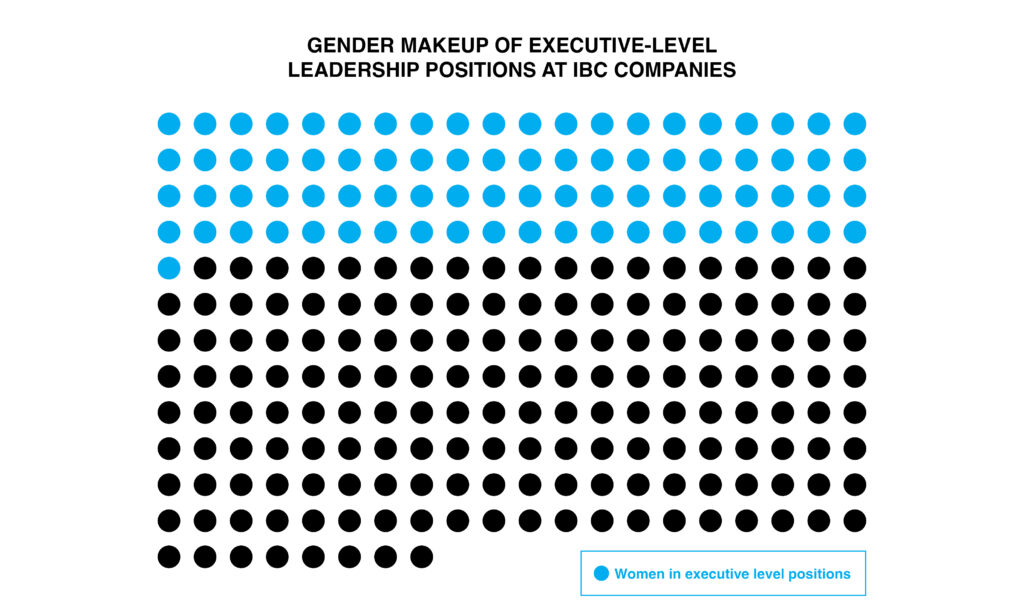
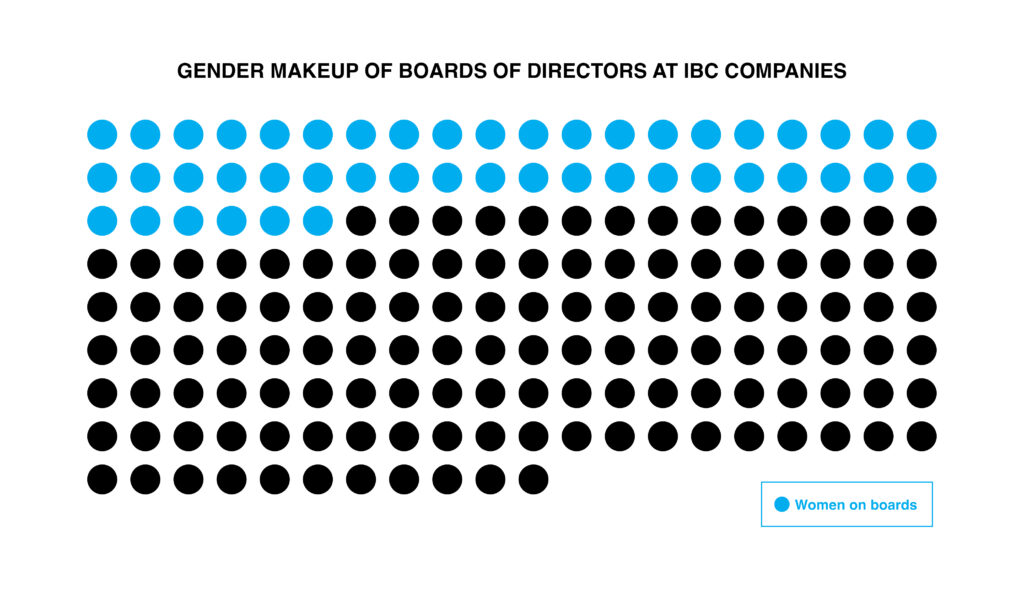


1 Comment
Anne Bacon · December 27, 2022 at 4:53 pm
WOW! I knew that there was an issue with the number of female leaders, but, wow. The change will need to come from the organizational and societal levels. No amount of personal work will overcome this type of disparity. Thanks for this great article.
Comments are closed.